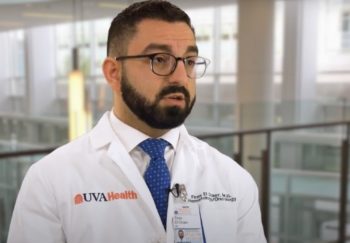On bad days, Shelly Scott is good at hiding her pain. “It’s unpredictable. One day, I’m doing ok and then the next, I wake up and hit the floor — literally – because of the pain in my legs, shins and lower back,” says the 34-year-old. “But if you didn’t know me, you wouldn’t guess that I was dealing with this.”
What Is Sickle Cell Disease?
Scott was born with sickle cell disease, a chronic inherited blood disorder. It’s caused by an abnormality found in hemoglobin, the protein in red blood cells that carries oxygen throughout the body. Because of this hemoglobin abnormality, the red blood cells collapse. They change from a flexible disc shape to a rigid, curved crescent or sickle shape.
The body destroys these sickle-shaped blood cells more quickly, causing anemia. They also clump together more easily, obstructing small blood vessels. This leads to pain crises (episodes of severe pain that can come on suddenly and last for long periods) and organ damage over time.
Sickle Cell Disease vs. Sickle Cell Anemia
Sickle cell disease or SCD is a broad term that includes several types of sickle cell gene mutations. One of these is sickle cell anemia, the most severe form of the disease.
Approximately 100,000 Americans are currently living with sickle cell disease, according to the Centers for Disease Control. A majority of these people are African American. In fact, one in 12 African Americans carry the sickle cell gene.
Treating Sickle Cell Disease
The only potential cure for sickle cell disease is a bone marrow transplant. However, this requires finding a suitable match — a healthy donor whose bone marrow is compatible — which can be challenging. Side effects of bone marrow transplant also can be severe.
Most often, treatments for sickle cell focus on managing the side effects of the disease, which include:
- Severe pain
- Fatigue
- Fever
- Infections
- Swelling in the hands and feet
“Historically, there hasn’t been a lot of progress in terms of new treatments and therapies for sickle cell disease,” says hematologist Kelly Davidson, MD. “That changed in 2019 with the approval of two new drugs that give us an opportunity to further help this patient population.”
Finding Relief from Chronic Symptoms
Scott has had success with medication. But like many patients with sickle cell, she also supplements prescription medicine with her own, at-home remedies to ease symptoms day to day. She finds that a warm bath or a heated blanket provide comfort when she’s in pain.
When those at-home remedies don’t provide relief, a trip to the hospital may be necessary. “I was only hospitalized a few times during childhood, but the pain crises are now more frequent,” says Scott. “There’s only so much you can do on your own, and then you have to get help.”
That help is available quickly at a same-day urgent care clinic at the UVA Infusion Center. “If a patient is having a typical pain crisis — with no high fever or severe chest pain — then often the pain can be resolved with IV pain medication and fluids,” says Davidson. “The goal is to treat patients before the pain escalates and to keep them out of the ER.”
Taking Control, Taking a Break
“I feel like they trust my judgement, and they allow me to come in and get the care I need,” says Scott. “This gives me more control of my condition.”
Struggling to Manage the Symptoms of Sickle Cell Disease?
Get specialized support for pain crises and other side effects.
When you’re living with a chronic health condition, having control is important. It’s easy to get overwhelmed. Scott admits she has periods of anxiety and depression. But being able to take action to give her body what it needs has instilled a sense of confidence. “I’m more aware of my body now and I know when I need to take a break and rest instead of pushing through the pain,” she says.
Having a supportive partner who can remind her to put on the brakes also helps keep Scott focused on her needs and limitations. Her fiancé, Darren, now knows when she’s putting on a brave face. “He’s gotten really good at recognizing when I’m in pain,” she says.
In addition to planning her wedding, Scott is trying to live as healthy as she can. She watches her diet, takes her medications, and relies on her support network of family, friends and her UVA care team. “Having a team of people willing to listen to you makes all the difference,” she says.



Thank you , Holly, for another humanistically written, interesting, clearly explained,, executional piece. You spread understanding, compassion and empathy. I have seen your other impressive work. I am a journalist, too, and I truly know are a great writer and reporter.
What a beautiful young lady, stay strong and blessed!